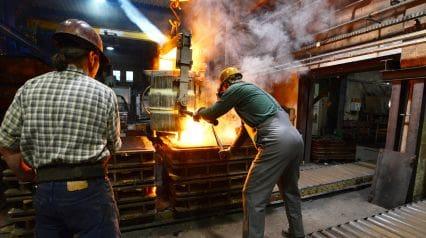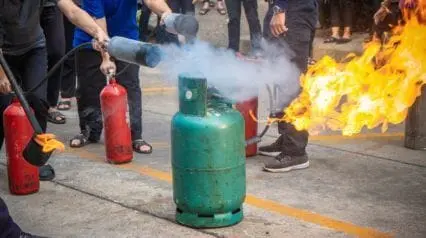What is an Electrical Fire?
An electrical fire is a fire that stems from electrical sources or systems. It occurs due to ignitions coming from overheating, malfunctioning, or damaged electrical components, equipment, or wiring. This fire can compromise the safety of residential, commercial, and industrial settings because of its potential to spread rapidly and cause extensive damage to lives and properties.
In the United States, electrical fires have resulted in approximately 295 deaths and 900 injuries in residential settings. Property losses due to these fires also amounted to an estimated $1.2 billion for homes and $501 million for non-residential structures.
In addition, this electrical hazard accounted for around 25-30% of fires in the European Union, costing over 1,200 deaths and €10 billion in property damage.
Common Causes
Electrical fires can be catastrophic, causing significant damage and threatening individual lives and properties. Understanding the factors that contribute to these fires is vital in implementing effective preventive measures.
So, what causes electrical fires in the first place? Explore each of these potential causes below:
- Damaged wiring – Electrical wires can become worn, frayed, or loose over time. When this happens, the wirings can overheat and slowly burn over a prolonged period.
- Malfunctioning appliances – Fires can result from faulty or poorly maintained electrical appliances and equipment. Examples include cords, kitchen appliances, heating and air conditioning units, and other devices that draw significant amounts of power.
- Overloaded circuits – Plugging too many devices into a single circuit can overload it. Exceeding the circuit’s capacity can generate high amounts of heat and ignite nearby combustible materials.
- Poorly installed extension cords and power strips – Replacing permanent wiring with improperly installed extension cords or connecting multiple appliances to a single power strip can cause a circuit overload and create a fire hazard.
- Faulty outlets and switches – Loose connections, damaged components, frayed cords, and incorrect wiring can result in overheats and trigger fires.
- Defective lighting fixtures – Faulty bulbs, lamps, and other lighting fixtures can emit excess heat, which can induce fires. In addition to this, using bulbs that go beyond the recommended wattage increases this risk.
- Proximity to heat sources – Fires are likely to occur if faulty wires or electrical tools are situated near combustible materials.
- Malfunctioning electrical systems – Electrical systems can experience short circuits, electrical arcs, and other faults, which can subsequently lead to fires.
Warning Signs
Electrical fires pose serious hazards, but their impacts can be minimized if you understand their telltale signs. This knowledge allows you to respond swiftly and keep everyone safe in the event of a fire.
It’s important to stay vigilant and take immediate action if you notice any of the following signs:
- Burning odor – A distinct smell of melting plastic, rubber, or wiring is a common sign of an electrical fire. If you find an unusual or persistent burning smell without any apparent source, it could be a hint of an electrical issue.
- Smoke – The presence of smoke, whether visible or faint, is a clear warning alarm for fires. If you see it coming from electrical appliances, outlets, or wiring, it’s crucial to act immediately to prevent the fire from spreading.
- Sparks – Aside from the smoke, visible sparks from outlets, switches, or appliances could signal an impending electrical fire. Be sure to keep an eye out for these sparks, whether they appear intermittently or continuously.
- Discolored outlets – Scorch marks or discoloration may suggest that outlets or switches are overheating and, consequently, can lead to potential fire damage. If you spot these marks, it’s best to report them for immediate action.
- Hot switch plates – If the switch plates or outlets feel hot to the touch, it could signify an electrical problem, as heat buildup can be a precursor to an electrical fire.
- Flickering lights – Frequent flickering of lights, along with a burning smell, could point out an electrical fire hazard. This can arise from loose connections, faulty wiring, or overloaded circuits.
- Tripped circuit breakers – Circuit breakers and fuses are bound to trip or blow up with too much current flowing. If this happens frequently without getting repaired, it can lead to electrical fires.
How to Put Out an Electrical Fire
Given their distinct nature compared to other types of fires, electrical fires require a specialized approach to ensure personal safety and effective fire suppression. Training is essential to carry this out effectively, but in case of an emergency, here’s how to stop an electrical fire:
- Immediately alert everyone in the vicinity about the fire.
- Unplug or disconnect the power source fueling the fire to prevent it from escalating.
- Before attempting to extinguish the fire, wear Personal Protective Equipment (PPE).
- Do not use water to put out the fire, as it can electrocute you or further spread the fire.
- Suppress the fire through the following methods:
- Fire extinguisher – designed for putting out electrical fires
- Non-flammable blanket – used to smother the flames
- Sand or baking soda – used for small household fires
Electrical Fire Prevention and Safety Tips
Ultimately, prevention is key to being safe from the devastating impacts of electrical fires. Here are 5 effective ways to prevent these fires before they start:
1. Perform Electrical Maintenance
Regular electrical maintenance is crucial to identify and address potential fire hazards. Start with routine inspections to check for faulty outlets, frayed wires, or outdated electrical systems. Make sure to have these maintenance checks done by a qualified electrician.
Aside from this, it’s also important to:
- Replace damaged cords, frayed wires, or malfunctioning outlets promptly.
- Avoid overloading circuits by distributing electrical appliances across multiple outlets.
- Install circuit breakers and ground fault circuit interrupters (GFCIs) to protect against electrical faults.
Create Your Own Electrical Maintenance Checklist
Eliminate manual tasks and streamline your operations.
Get started for FREE2. Promote Safe Electrical Practices
Practicing safe electrical habits considerably reduces the risk of fires. Keep in mind the following guidelines when carrying out electrical work:
- Never attempt DIY electrical repairs unless you are a trained professional.
- Avoid running electrical cords under carpets, rugs, or furniture.
- Don’t use damaged or frayed cords and cables.
- Unplug appliances when not in use (e.g., before leaving the premises or going to bed).
3. Develop an Emergency Plan
Planning is vital for a swift and organized response to electrical fires. Before anything happens, it’s best to prepare evacuation protocols and fire safety plans that everyone must follow in case of emergencies. These plans should:
- Establish and communicate evacuation routes to all occupants.
- Designate a meeting point outside the building.
- Train everyone on what and how to use fire extinguishers for electrical fires and when to evacuate the area.
4. Install Smoke Alarms
Smoke alarms help detect fires early to give you and other occupants enough time to evacuate. Make sure to have them installed on every level of the property for maximum protection. And to ensure optimal performance, test these alarms monthly and replace their batteries at least once a year.
5. Prepare the Necessary Fire Safety Equipment
In order to put out electrical fires, the proper fire safety equipment is essential. Start by learning about the different classes of fire extinguishers and their intended uses. Then, check which type fits the needs and risks of your property or workplace.
For example, if your workplace requires heavy amounts of electrical work, it’s best to invest in a fire extinguisher that’s designed specifically for electrical fires. The class can vary depending on your jurisdiction, as follows: Class C (US), Electrical (UK), and Class E (EU).
Once you’ve selected the appropriate fire extinguishers, place them in locations that people can easily access in emergencies. It’s also important to train employees and occupants on how to operate these extinguishers effectively.




